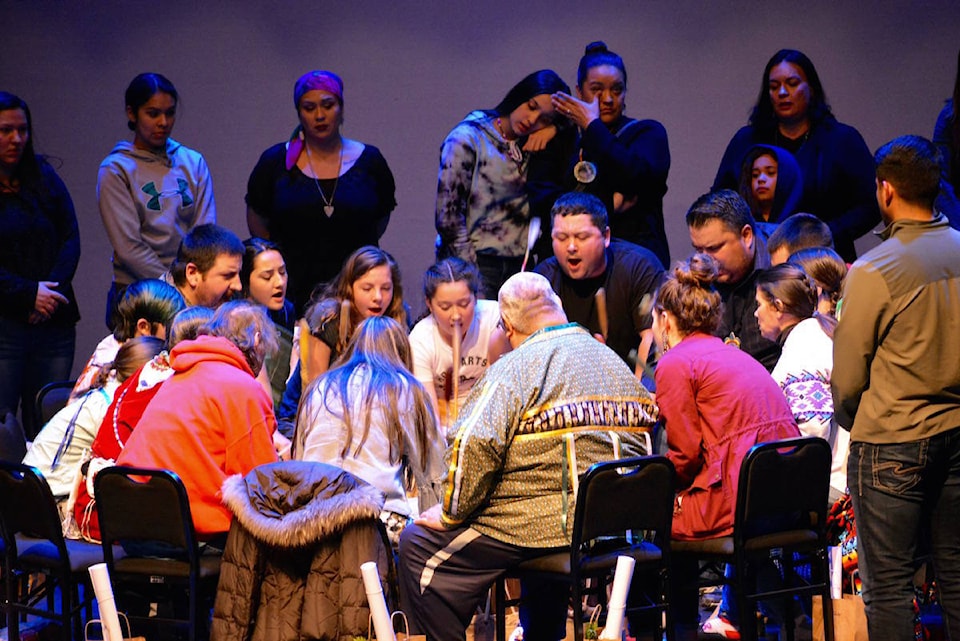A case that will determine whether or not the United States-based Sinixt have Indigenous rights in Canada was heard at the Supreme Court of Canada in Ottawa on Thursday.
Last year the B.C. Court of Appeal decided that Sinixt hunter Richard Desautel has an Indigeous right to hunt in Canada even though he lives in the United States, and that the Sinixt are an Indigenous people of Canada, capable of possessing constitutionally protected rights. The B.C. Attorney General then appealed that decision to the Supreme Court of Canada (SCC).
The federal government declared the Sinixt extinct in Canada in 1956.
The nine judges of the court heard one-hour legal arguments from lawyers for each side, plus 10-minute presentations from several provinces intervening on the side of B.C., and a number of Indigenous groups intervening on the side of Desautel.
The hearing was live streamed and will be archived for later viewing here.
As in all SCC cases there were no witnesses called. The judges heard the presentations and occasionally asked questions to challenge or clarify. They stuck very strictly to the time limits.
The Colville Confederated Tribes in Washington State got permission for three of its Sinixt members to cross the border, quarantine, and be in Ottawa for the hearing.
One of those was Shelly Boyd, who later told the Nelson Star, “It was just such an emotional day … The Supreme Court of Canada is no joke. It is very, very difficult. They went through every phase of everything that they could go through. I felt like they asked some really tough questions.”
What is an Aboriginal right?
One of the basic questions in this case from its beginnings in the provincial court in Nelson in 2010 is whether hunting in Canada an American resident has Indigenous rights under section 35 of the Canadian Charter of Rights and Freedoms, which states in part that “the existing aboriginal and treaty rights of the aboriginal peoples of Canada are hereby recognized and affirmed.”
Is hunting by a resident of another country an Indigenous right? Can Desautel be considered an aboriginal person of Canada? The province says he is not.
To decide whether a particular activity is in fact an Indigenous right, it is common for courts to use the so-called Van der Peet test.
That 10-point test, written by the judges in the case of R v. Van der Peet, stated that in order to be considered an Indigenous right, an activity must be part of a “practice, custom or tradition integral to the distinctive culture of the Aboriginal group asserting the right.”
The B.C. Court of Appeal agreed with Desautel that he is part of a “rights-bearing group” under the Charter as defined by Van der Peet.
Province of BC: residency is everything
The province began its argument to the SCC by stating that the judges at the B.C. Court of Appeal had mistakenly relied on the Van der Peet test, which makes no mention of the location of the rights-holder.
Glen Thompson, the province’s lawyer, said the test would not apply anyway, since the Sinixt are not an aboriginal people of Canada. They have no community here now and didn’t when the Charter was written in 1982. Also the Sinixt had no political representation or other organizations in Canada with whom the province could deal.
The existence of the border, and the fact that Desautel lives Washington State, were a significant part of the province’s argument.
“The border is part of the Canadian sovereign state and has to be respected,” Thompson said.
Desautel: Residency doesn’t matter
Lawyer Mark Underhill, representing Desautel, argued that at the time of contact the Sinixt were residents of what is now Canada, and that’s all that matters.
“Modern day residency has no place in this,” he said.
The practice of hunting in what is now Canada has always been integral to Sinixt culture (therefore meeting the Van der Peet test), whether or not it was continually practised here.
Underhill added it may not have been practised here over some periods of time for any number of reasons including the likelihood the Sinixt in Canada had involuntarily migrated to their reserve in Washington and not felt welcome in Canada.
He said that there was no break in how integral to their culture the practice was, even though there may have been breaks in their presence here.
“To practise their culture they have to be able to hunt in Canada,” Underhill said.
He refuted the province’s characterization of the Sinixt as a foreign group.
“You don’t have a foreign group, what you have is the same collective on both sides of the border.”
Clarifying this for the Nelson Star later, Underhill said, “Aboriginal identity is tied up with place. That is the culture, that is who they are. It is not sufficient to say, ‘Well, you can hunt down there [in Washington].’ They want to hunt where their ancestors hunted. That is how you practice your culture.”
Boyd says watching the court proceeding was a profound experience for her.
“That is a moment that I know our ancestors hoped for, but I don’t think that they thought we were going to make it here,” said Boyd.
“I don’t think that Baptiste Christian, my son’s great-great-grandfather, thought that words he wrote in 1911 would ever come back and be used in a court case that would ultimately end up all the way across the continent in Ottawa at the Supreme Court in a case that I think we’re going to win.”
The SCC reserved its decision until an undefined future date.
Related:
• Supreme Court of Canada will hear Sinixt appeal
• B.C.’s top court upholds Sinixt rights in elk-hunting case
www.facebook.com



